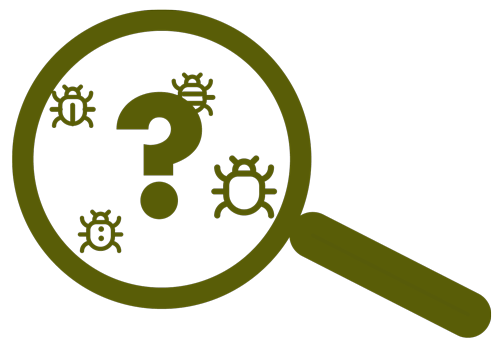The five common signs of bed bugs

Bites
The first clue suggesting that you may have a bed bug infestation is often the presence of itching bites. But because a person may not react to bed bug bites at all, its not a sure sign. You can learn more about bed bug bites here.

Bed bug droppings, fecal spots or poop
Bed bugs feed every 5-7 days when a host is available. Between feedings, they digest their meal, condensing the blood and excreting excess liquid as waste.
This waste appears as semi-liquid black spots (not red, as the blood is digested) and is often found in larger groups on mattresses, bed frames or areas where bed bugs travel. In small infestations, fewer spots may be seen, typically in areas where bed bugs are active (see below).

Empty skins
The molted skins of the bed bug look very similar to the bed bug itself. They are the same shape and translucent in color. They will be different sizes depending on the life stage of the bed bug that molted.

Blood stains
Bed bugs inject an anticoagulation chemical into the bloodstream. As a result, the bite continues to bleed for some time, which in turn causes tiny flecks of blood on the bedsheets and pillows.
If you are a restless sleeper, it could also be from crushing a newly feed bed bug 🙂

Bed bug eggs
Eggs from bed bugs are very small (about 1 mm in length) and white to pearl-white in color. Older eggs will have a spot that looks like an eye. The eggs are sticky.
Where to look for signs of bed bugs
Bed bugs like to be close to their hosts, so the bed is the primary suspect.
But be sure to check the following places:
- Mattress seams
- Electrical outlets
- Edge of carpeting
- Ceiling/wall junctions
- Behind the headboard
- Behind pictures on the wall
- Along the tops of baseboards
- Wood frame of the box springs
- Curtain seams (they gather at the rod)
